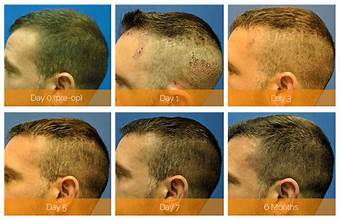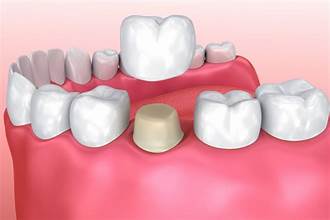HEALTH
The Role of Medical Cannabis Doctors in Patient Wellness

In recent years, medical cannabis has emerged as a promising avenue for patient wellness, offering relief for a spectrum of conditions ranging from chronic pain to anxiety disorders. Amidst this burgeoning field, medical cannabis doctors play a pivotal role in guiding patients through the complexities of cannabis-based therapies. Beyond simply prescribing a treatment, these specialised physicians serve as educators, advocates, and partners in navigating the journey toward holistic well-being.
Understanding the Landscape
Before delving into the role of medical cannabis doctors, it’s essential to grasp the landscape of medical cannabis itself. Cannabis, long stigmatised and demonised, has experienced a renaissance in the medical community as research continues to unveil its therapeutic potential. With compounds like THC and CBD interacting with the body’s endocannabinoid system, cannabis offers multifaceted effects that can address symptoms associated with various medical conditions.
However, the complexity of cannabis as a medicine necessitates informed guidance, particularly concerning dosage, strain selection, and potential interactions with existing medications. This is where medical cannabis doctors step in, bridging the gap between scientific research and practical application for patient wellness.
The Role of Medical Cannabis Doctors
Assessment and Consultation
Medical cannabis doctors begin by conducting thorough assessments of patients, taking into account their medical history, current symptoms, and treatment goals. Through comprehensive consultations, they establish a foundation of trust and understanding, empowering patients to make informed decisions about their health.
Customised Treatment Plans
One size does not fit all in medical cannabis therapy. Recognising this, cannabis doctors craft personalised treatment plans tailored to each patient’s unique needs. Factors such as the type and severity of the condition, the patient’s tolerance, and their preferences are carefully considered in devising an optimal approach to cannabis-based treatment.
Education and Empowerment
Education forms a cornerstone of the medical cannabis doctor’s role. They educate patients about the science behind cannabis, including its mechanisms of action and potential benefits.
Moreover, they guide responsible use, emphasising dosage control, potential side effects, and harm reduction strategies. By arming patients with knowledge, medical cannabis doctors empower them to take an active role in managing their health.
Monitoring and Adjustment
Patient wellness is an ongoing journey, and medical cannabis doctors accompany their patients every step of the way. Through regular follow-ups and monitoring, they assess the effectiveness of treatment, monitor for any adverse effects, and make adjustments as necessary. This iterative process ensures that patients receive optimal therapeutic outcomes while minimising risks.
Advocacy and Research
Beyond individual patient care, medical cannabis doctors often engage in advocacy efforts to promote broader acceptance and accessibility of medical cannabis. They contribute to research initiatives aimed at further elucidating the therapeutic potential of cannabis and refining best practices in medical cannabis treatment. They strive to create an environment conducive to patient wellness by advocating for evidence-based policies and regulations.
Challenges and Opportunities
While medical cannabis holds immense promise, it also presents challenges that medical cannabis doctors must navigate. These include regulatory complexities, stigma, and the need for continued research to expand our understanding of cannabis’s medical applications. However, these challenges are accompanied by opportunities for growth, innovation, and improved patient outcomes.
Conclusion
In the realm of patient wellness, medical cannabis doctors serve as beacons of expertise and compassion, guiding individuals toward a better quality of life through evidence-based cannabis therapy. By blending medical knowledge with empathy and advocacy, they play a vital role in shaping the future of healthcare, where cannabis emerges as a cornerstone of holistic well-being. As the field of medical cannabis continues to evolve, the contributions of these dedicated professionals will remain indispensable in unlocking the full potential of this ancient yet groundbreaking medicine.
HEALTH
Step By Step Guide on DIY Hair Restoration Treatments

DIY Hair Restoration Treatments is a process in which an individual uses different techniques to assess their hair and regrowth it without needing to visit the clinic or get assistance from professionals. This treatment mainly depends on various tools, products and techniques to encourage the growth of the hair.
People often use scalp messages, using special oils on the scalp or scalp micro-needling, diet modification or low-level laser therapy for DIY hair restoration. It is one of the most affordable and painless ways to restore hair.
Guide on Hair Restoration Treatments
DIY hair restoration techniques require thorough research on consultation, treatment techniques, level of expertise of the technician, knowledge about tools and materials and professional healthcare. It is based on a proper treatment plan and routine sessions for the proper application of treatment. To get the recommended result, guidance from hair restoration Vaughan experts is necessary.
Scalp Massage
Scalp massage is the most useful, effective and gentle technique in which you must rub your scalp using your fingertips. This massage increases the blood flow in hair follicles which strengthens the root of the hair and causes hair regrowth. This is not a tricky process. You can perform the scalp massages by sitting or standing in a comfortable position.
It reduces stress and anxiety and ensures relaxation of the scalp muscles. You can take more benefits by adding a few drops of oils and continuing this massage further with your finger. To get quick results, you can do these tasks 2 to 3 times per week.
Onion Juice
Onion Juice is one of the most important natural remedies for hair regrowth. For this purpose, chop the medium-sized onion and blend it gently to make it a smooth paste. Now, extract all the onion juice from this paste and apply it to the scalp. Do a soft massage with your fingers and leave it for 15-30 minutes. Now, it’s time to rinse the scalp with mild shampoo or lukewarm water to remove the onion’s odor.
For better results, repeat this process 1-2 times a week. Use the same process for several weeks to get better results. The onion juice consists of sulfur compounds that increase the blood flow. It stimulates the hair follicles. Once hair follicles become strong, they regrow the hair.
Aloe Vera Gel
Another natural substance for smooth regrowth of hair is the Aloe Vera Gel. It just not only helps in hair growth but also provides scalp health. For this purpose, get the fresh aloe vera leaf from a trusted source, cut it lengthwise and collect all the gel by using a spoon. Now apply this gel directly to your scalp using your fingertips.
Leave gel for at least 30 minutes to get the desired result. Now wash your scalp with lukewarm water. Repeat this same process at least 2 to 3 times a week to get the ideal result.
Coconut Milk
Coconut milk is just like a cream liquid from the mature natural coconut. It is famous for providing nourishment to the skin or hair. You can use both fresh or canned coconut milk for this purpose. Use this milk on your scalp by using your fingertips and massage it gently to get the recommended result. Now wait for 30 minutes and wash it with lukewarm water to remove all odor from the scalp. Coconut milk provides health and nourishes the hair follicles and helps in hair regrowth.
Eggs
Usually, Eggs are famous for nutritious food but you can also use them as a remedy for hair regrowth purposes. Here are the steps on how you can use it gently. Crack one or two eggs and mix it well.
Now apply this smashed egg on hair follicles by using your fingertips. Message gently for a few minutes and then leave it for 30 minutes. Now wash your scalp with cool or lukewarm water to remove it properly. You can also use shampoo to remove the paste of smashed eggs properly.
Conclusion
DIY hair restoration treatments are useful techniques used to grow hair naturally without the need for a professional. We have explained various natural remedies that you can use to regrow your hair. Never overstep anything while massaging the scalp. You can use natural oil and change your diet.
It is better if you get a consultation with a doctor for hair treatment.By following the above techniques, you can take control of your health and enhance your appearance confidently.
HEALTH
Nurse Well-being – 6 Tips for Nurses to Manage Stress

Nursing is inherently a high-stress profession, where the demands of patient care, long hours, and the emotional weight of the job can take a significant toll on a nurse’s well-being. The fast-paced and sometimes unpredictable nature of healthcare settings can exacerbate stress levels, impacting not only the health of the nurses themselves but also the quality of care they provide to patients. It is crucial, therefore, for nurses to adopt effective stress management strategies to safeguard their mental, emotional, and physical health.
This guide offers practical tips for nurses to manage stress, promoting a balanced and healthy approach to their challenging yet vital roles in healthcare.
1. Mindfulness and Meditation
Mindfulness and meditation have gained recognition for their ability to reduce stress and improve mental clarity. For nurses who often work in environments where focus and calm are essential, these practices can be particularly beneficial. Mindfulness involves being fully present and engaged in the moment, which can help nurses manage the emotional and physical demands of their work. By adopting mindfulness practices, nurses can enhance their ability to respond to work challenges with greater composure and efficiency.
Starting a meditation practice can be as simple as dedicating a few minutes each day to focus on one’s breath or engage in guided meditation sessions. Many resources, including apps and online courses, are available to help beginners learn the basics of meditation.
2. Pursuing Further Education with Flexibility
For nurses aspiring to expand their roles, particularly those interested in becoming nurse educators, pursuing further education is a valuable path. However, balancing work, studies, and personal life can be a significant source of stress. Engaging in online nurse educator programs presents a flexible solution, allowing nurses to advance their education and career prospects without compromising their work commitments or well-being. These programs are designed to fit the unique schedules of nursing professionals, providing an opportunity for growth and development that aligns with their demanding lifestyles.
The benefits of online education extend beyond flexibility; they also include exposure to a diverse range of perspectives, access to cutting-edge knowledge in the field, and the ability to apply new learnings directly to clinical practice. For nurses, this continuous professional development can be a source of personal fulfillment and motivation, countering feelings of burnout and stagnation. By choosing online programs, nurses can pursue their ambitions to become educators, shaping the next generation of nursing professionals while managing stress and maintaining balance in their lives.
3. Regular Physical Activity
Physical activity is a potent stress reliever for individuals in all professions, particularly in nursing, where the physical and emotional demands can be intense. Regular exercise releases endorphins, the body’s natural painkillers and mood elevators, which can improve mood, enhance energy levels, and reduce feelings of stress. For nurses, finding an activity they enjoy and can consistently participate in—be it yoga, running, or even brisk walking—can make a significant difference in their overall stress levels and well-being.
Incorporating exercise into a busy nursing schedule may seem challenging, but even short, focused bouts of physical activity can be beneficial. Nurses can consider integrating exercise into their daily routine in simple ways, such as taking the stairs instead of the elevator, engaging in short stretching sessions during breaks, or participating in team sports or fitness classes with colleagues, which can also offer social support. Establishing a routine that includes physical activity can provide nurses with a valuable outlet for stress relief and a method for maintaining their health and stamina.
4. Adequate Rest and Sleep
The significance of sufficient rest and sleep cannot be overstated for nurses, who often work long and irregular hours. Quality sleep is essential for physical health, emotional well-being, and cognitive function, all critical components for effective nursing. Lack of sleep can exacerbate stress, impair decision-making, and reduce the ability to cope with the demanding nature of nursing work. Nurses should prioritize establishing a regular sleep schedule, ensuring they get the recommended 7-9 hours of uninterrupted sleep per night to function optimally.
Creating a conducive sleep environment is also vital. Nurses can improve their sleep quality by ensuring their bedroom is quiet, dark, and at a comfortable temperature. Engaging in relaxing activities before bed, such as reading or taking a warm bath, can help signal to the body that it’s time to wind down. Additionally, limiting exposure to screens before bedtime can enhance sleep quality by reducing the impact of blue light on sleep-inducing hormones. By prioritizing sleep, nurses can better manage stress and maintain their health and well-being.
5. Establishing a Support Network
Having a strong support network is invaluable for managing stress in nursing. This network can include colleagues who understand the unique challenges of the profession – friends and family who provide emotional support, and professional groups or forums where nurses can share experiences and advice. Such networks offer an outlet for discussing challenges, celebrating successes, and seeking guidance, reducing feelings of isolation and overwhelm.
Building this support network can involve participating in nursing associations, attending professional events, or simply maintaining open lines of communication with peers and loved ones. Encouraging a culture of support within the workplace can also foster a sense of community and collective resilience among nursing staff. When nurses feel supported, they are better equipped to manage stress and navigate the complexities of their work with confidence and composure.
6. Professional Counseling and Mental Health Resources
Recognizing when to seek professional help is a critical aspect of managing stress effectively. Nurses should be aware of the signs of excessive stress, such as persistent feelings of anxiety, irritability, or burnout, and know that seeking help is a sign of strength, not weakness. Many healthcare institutions offer counseling services or stress management programs designed to support healthcare professionals. Additionally, numerous online resources and mental health apps are tailored to the needs of those in high-stress occupations like nursing.
Engaging with these resources can provide nurses with strategies to manage stress, cope with the emotional demands of their work, and maintain their mental health. Professional counselors can offer personalized guidance and support, helping nurses develop effective coping mechanisms and resilience. By taking advantage of these resources, nurses can ensure they are not only caring for their patients but also themselves, sustaining their capacity to provide compassionate and high-quality care.
Conclusion
Nurse well-being is paramount in the high-stress, high-stakes field of healthcare. By adopting strategies such as pursuing further education with flexibility, maintaining regular physical activity, practicing mindfulness and meditation, ensuring adequate rest and sleep, establishing a support network, and utilizing professional counseling and mental health resources, nurses can effectively manage stress and maintain their health and well-being.
HEALTH
How Long Do Dental Crowns Last on Teeth?

Regular check-ups and dental hygiene is the most important life-hacker for your teeth. Nevertheless, although thoroughness is always adhered to, some dental problems are occurring that should be looked at and intervened. Among other treatments, the placement of crowns may be applied, instead. But how long do dental crowns last on teeth?
Having dental crowns has improved life duration in a real sense as well as impacted by several factors like mouth structure and sadly some tips can restore the duration and lifespan of dental crowns.
What Are Dental Crowns?
Dental crowns, or as they may be known popularly, “caps,” are dental prostheses used to cover a tooth that is structurally damaged for aesthetic or reinforcing purposes. They are of that specific colour that matches the natural shade of your teeth, hence appearing as if they were one of them.
A dental crown works the way it does by protecting the covered tooth from the inside, essentially giving it the support it needs from outside its surface and ceasing further damage. It is therefore utilized in scenarios where the filling by itself will not sufficiently rectify the current dental problem. To reinforce the whole visual area of the tooth, this way a crown clings to it tightly and thus enhances the additional stability and safety.
Types of Dental Crowns
Capped intact crowns are designed using different materials, each with its specific benefits and potential downsides. The most common types of dental crowns include:
- Ceramic or Porcelain Crowns: These crowns, too, are highly demanded because they are almost indistinguishable; they are the same colour as your teeth. These structures are the best for those teeth that are visible to others. For instance, they do great in aesthetics and durability but along the path of time, they may chip or crack.
- Metal Crowns: The human bite force ranges from 120 to 200 pounds per square inch (PSI), which puts them at risk of chipping and cracking real teeth. Therefore, metal crowns are made of metals like gold, nickel, palladium, and chromium, which are very durable and wear-resistant. Nevertheless, this silver-like colour will also result in difficult adhesion to the teeth which are located in the front.
- Porcelain-Fused-to-Metal (PFM) Crowns: The high strength, along with the authenticity of the porcelain aesthetics, is what makes PFM crowns the right pick. This type of restoration is an ideal option for both front and back teeth. When it comes to the metal side of the crown, it may peek out slightly over time.
- All-Resin Crowns: Resin crowns are among the cheapest choices, yet they have very little durability in comparison to other materials that might be worn faster than other options. The biggest risk for active prosthetics is the more prone to fracture and the replacement will be more frequently required than passive prosthetics.
- Pressed Ceramic Crowns: Ceramic crowns that are pressed maintain an equilibrium in that factor between strength and looks. They bring with them ceramic outer shells and strong inner nuclei which give them great durability and very much a natural-looking appearance.
A dentist will examine your specific situation individually and recommend the most appropriate type of crown matching taking into account the place of the tooth, your wishes regarding aesthetics, and the size of your budget.
How Long Do Dental Crowns Last on Teeth?
When deciding whether one should undergo the procedure of getting a dental crown, one has to take into consideration that the lifespan of the crown will depend on some factors including the material used, one’s dental hygiene, the diet, as well as the overall wearing out of the teeth. The longevity of dental crowns is not expected to last for one’s lifetime. With correct maintenance practice, the dental crowns would serve their purpose for 15-30 years.
According to this dentist who does Invisalign in Shrewsbury, taking care of a dental crown involves maintaining good oral hygiene and being mindful of your eating habits. Brush your teeth at least twice a day and floss daily to prevent plaque buildup around the crown. Use a fluoride toothpaste and a soft-bristled toothbrush to clean gently. Avoid biting down on hard foods or using your teeth as tools to prevent damage to the crown. Regular dental check-ups are crucial to monitor the condition of the crown and address any potential issues promptly.
To a great extent of their professionalism and skill, gold crowns considered the most durable ones, can be long-term when compared to other types of crowns. On the other hand, they have a lower share in the market for this reason as their appearance is quite different from the other bearings and they have higher costs.
Contrarily, resin crowns might have a better prognosis because they are more prone to wear and fracture. Porcelain or ceramic crowns, including pressed ceramic crowns – the most aesthetic and durable combination of materials available in dentistry. You can get good visual results with them if you use this type of material. They are the most frequently chosen crowns by patients.
Factors Affecting the Lifespan of Dental Crowns
On average a dental crown might last between 15 to 30 years, nevertheless, multiple factors are included in it. Understanding these factors can help you maximize the lifespan of your dental crowns: Understanding these factors can help you maximize the lifespan of your dental crowns:
1. Oral Hygiene Practices
To keep your dental crowns better and longer, monitoring good oral hygiene is essential. Brush your teeth at least in the morning and at night and also don’t forget to floss daily to keep away the plaque, bacteria buildup and the associated tooth decay, and gum disease. It is necessary to clean up the hole near the foundation to prevent possible problems.
2. Diet and Chewing Habits
The duration of a dental crown’s lifespan depends on two factors: your diet and chewing habits. It may be better to stay away from such foods as hard or sticky ones which can lead to disruption in the adhesive joint or can result in the crack of the crown. You should not chew ice, hard candies, or items with similar features as they are capable of perpetrating cracks and fractures in your crown.
3. Teeth Grinding and Clenching
Bruxism or clenching and grinding of teeth can be a perfect cause of shortening permanent dental crowns’ lifespan. The excessive power required for the grinding and pressing can cause the crowns to be abraded bit by bit or loosen up over time. If you have bruxism, you are often likely to grind your teeth at night, this can wear out your crowns. By wearing a night guard, you will prevent this and exclude the risk of damage.
4. Regular Dental Check-ups
Avery important step that you should pay attention to in dental crown maintenance is a regular oral visit that allows identify any possible disease of the crowns as early as possible. As part of your regular checkup, your dentist would check the state of the crowns, be on the lookout for any signs of wear, or crack, and mainly discuss any issues or cases of complications that you may have. Other benefits, such as the prevention of caries and periodontitis, are high in cost-effectiveness and vital for the longevity of dental crowns.
What Happens If a Dental Crown Fails or Falls Out?
Like dental crown restoration, the dental crown can be damaged or even become dislodged hence causing its failure under certain conditions. The main causes for crown failure are debris supplementing beneath the crown and floss entangling around it.
A fallen crown, which is still kept in good condition, can be simply re-cemented by a professional dentist. While it could be the case that the new cement will not be as effective as the old one, the durability could still be quite a bit. Such a situation will force the replacement of the bonding of the crown, if any.
If you have a crown breakage or a crown pulled out, you should contact the dental care professional ASAP which may lead to the teeth breaking down. A prompt action can save the subject or reduce the trouble it can cause.
Conclusion
Dental crowns are a broad tool that can be used for the restoration of teeth that have emerged and are in deep trouble. The lifespan of the dental crown may vary due to several factors. However, certain good mouth hygiene practices, a balanced diet, and regular dental appointments with a dentist can help you to extend the life of the crown for a long period.
If you are planning to get dental crowns, discuss with the dental specialist what type of crowns is suitable for your particular circumstances. Make sure you practice good oral hygiene and do not apply a great force on the crowns, also if you need to work on removing your grinding and clenching habits then you need to do this with visits to the dentists.
Dentakay is the place that you should be considering for affordable and high-quality crowns in Turkey. We are a dental clinic with an expert team of dentists and great facilities. To obtain more knowledge regarding the dental crown Turkey process please visit us or schedule a consultation and receive the benefits that dental implants provide.

 TECHNOLOGY4 months ago
TECHNOLOGY4 months agoBlog Arcy Art: Where Architecture Meets Art

 ENTERTAINMENT1 week ago
ENTERTAINMENT1 week agoExploring the Kristen Archives: A Treasure Trove of Erotica and More

 LIFESTYLE1 week ago
LIFESTYLE1 week agoWho Is Sandra Orlow?

 LIFESTYLE4 months ago
LIFESTYLE4 months agoThe Disciplinary Wives Club: Spanking for Love, Not Punishment

 ENTERTAINMENT5 days ago
ENTERTAINMENT5 days agoKiss KH: The Streaming Platform Redefining Digital Engagement and Cultural Currents

 GENERAL4 months ago
GENERAL4 months agoWhat are stories of male chastity? A Comprehensive Guide

 HOME IMPROVEMENT2 days ago
HOME IMPROVEMENT2 days agoGet Your Grout to Gleam With These Easy-To-Follow Tips

 GENERAL5 months ago
GENERAL5 months agoSmartSchoolBoy9: The Rise of a Viral Chasing Kid Sensation









